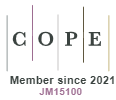An investigation of subjective feelings related to syllabification in Polish — the division of consonant clusters containing sonorants
DOI:
https://doi.org/10.18778/0208-6077.51.01.08Keywords:
syllable, syllabification, subjective feelings, phonology, the sonority principle, the principle of maximal onsetAbstract
This paper presents the results of an investigation of subjective feelings related to the syllabification of Polish words written in orthographic form. The results presented are limited to consonant clusters that contain at least one sonorant. This is a continuation of the author’s previous paper: An investigation of subjective feelings related to syllabification in Polish — the division of consonant clusters composed of obstruents. In previous articles the author has shown that, despite the presence of numerous long consonant clusters in Polish, the process of syllabification may be based on phonological principles: the sonority principle and the principle of maximal onset. The main goal of the present investigations was to verify whether the syllabification based on phonology differs from that based on subjective feelings. The article also refers to some statistical properties of consonant clusters, with the aim of verifying whether the results presented here are related to those properties.
Downloads
References
Demenko G., Wypych M., Baranowska E., 2003, Implementation of Grapheme-to-Phoneme Rules and Extended SAMPA Alphabet in Polish Text-to-Speech Synthesis, w: M. Karpiński (red.), Speech and Language Technology VII, Polskie Towarzystwo Fonetyczne, Poznań.
Google Scholar
Dobrogowska K., 1984, Śródgłosowe grupy spółgłosek w polskich tekstach popularnonaukowych, „Polonica”, t. 10.
Google Scholar
Dobrogowska K., 1990, Word internal consonant clusters in Polish artistic prose, „Studia Phonetica Posnaniensia”, t. 2.
Google Scholar
Dunaj B., 1985, Grupy spółgłoskowe współczesnej polszczyzny mówionej (w języku mieszkańców Krakowa), „Prace Językoznawcze. Zeszyty Naukowe Uniwersytetu Jagiellońskiego”, DCCCIII.
Google Scholar
Jassem W., Łobacz P., 1974, Fonotaktyczna analiza mówionego tekstu polskiego, „Biuletyn Polskiego Towarzystwa Językoznawczego”, z. 32.
Google Scholar
Osiewicz M., 2010, Kierunki przemian polszczyzny w zakresie fonetyki (propozycja rozdziału podręcznika do nauczania treści historycznojęzykowych na studiach I stopnia), „Kwartalnik Językoznawczy”, z. 2.
Google Scholar
Ostaszewska D., Tambor J., 2002, Fonetyka i fonologia współczesnego języka polskiego, Wydawnictwo Naukowe PWN, Warszawa.
Google Scholar
Polański K. (red.), 1999, Encyklopedia językoznawstwa ogólnego, Zakład Narodowy im. Ossolińskich, Warszawa.
Google Scholar
Steffen-Batogowa M., 1975, Automatyzacja transkrypcji fonematycznej tekstów polskich, Wydawnictwo Naukowe PWN, Warszawa.
Google Scholar
Szpyra-Kozłowska J., 1998, The sonority scale and phonetic syllabification in Polish, „Biuletyn Polskiego Towarzystwa Językoznawczego”, t. 54.
Google Scholar
Szpyra-Kozłowska J., 2002, Wprowadzenie do współczesnej fonologii, Wydawnictwo Uniwersytetu Marii Curie-Skłodowskiej, Lublin.
Google Scholar
Śledziński D., 2013, Podział korpusu tekstów na sylaby — analiza polskich grup spółgłoskowych, „Kwartalnik Językoznawczy”, z. 3 (15).
Google Scholar
Trask R.L., 1996, A dictionary of phonetics and phonology, Routlege, New York.
Google Scholar
Wierzchowska B., 1971, Wymowa polska, Państwowe Zakłady Wydawnictw Szkolnych, Warszawa.
Google Scholar
Downloads
Published
How to Cite
Issue
Section
License

This work is licensed under a Creative Commons Attribution-NonCommercial-NoDerivatives 4.0 International License.










